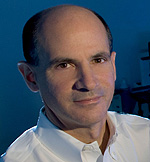 |
PROFESSORDepartment of Neurology and Neurological Sciences Stanford University School of Medicine |
DIRECTORThe Glenn Center for the Biology of Aging Stanford University School of Medicine |
DIRECTORRR&D Center of Excellence / REAP VA Palo Alto Health Care System |
CHIEF Neurology Service VA Palo Alto Health Care System |
DEPUTY DIRECTORStanford Center on Longevity (SCL) Stanford University |
Is it real or science fiction to dream of being able to treat… getting old? In this episode, we discuss with Dr. Thomas Rando from Stanford (who directs the Glenn Center for the Biology of Aging), Kristen Fortney, CEO of BioAge, and a16z’s general partner Vijay Pande where we are in the field of “geroscience” — the idea of studying aging itself, and aging as the root risk for all aging related disease. Far from science fiction, recent discoveries have given us a whole crop of promising breakthroughs to treat aging, such as parabiosis (young blood infused into old blood), senolytics, and rapamycin, and more.
Scientists discern signatures of old versus young stem cells
/in News, News 2013, Uncategorized /by sjungers BY BRUCE GOLDMAN
BY BRUCE GOLDMAN
A chemical code scrawled on histones — the protein husks that coat DNA in every animal or plant cell — determines which genes in that cell are turned on and which are turned off. Now, Stanford University School of Medicine researchers have taken a new step in the deciphering of that histone code.
In a study published June 27 in Cell Reports, a team led by Thomas Rando, MD, PhD, professor of neurology and neurological sciences and chief of the Veterans Affairs Palo Alto Health Care System’s neurology service, has identified characteristic differences in “histone signatures” between stem cells from the muscles of young mice and old mice. The team also distinguished histone-signature differences between quiescent and active stem cells in the muscles of young mice.
